When a front derailleur is present, it’s hard to argue against picking a crank from the same company that makes your derailleurs and shifters. After all, they’re designed to work together.
However, the new age of 1x gearing has helped to make off-road-going bikes simpler to use, easier to service, and arguably more reliable. That simplicity has also helped to reduce the walled gardens of the biggest component manufacturers ruling the roost. Today, there’s an overwhelming amount of choice in cranksets for anyone with a bit of cash to splurge and a desire to add some individuality – and perhaps a talking point – to the most centrally located component of their bicycle.
Beyond the biggest drivetrain manufacturers offering brand-matched cranks across multiple price points, you have mainstream brands such as FSA, Rotor, RaceFace, Easton, Praxis, Hope, and more, all vying for your interest.
Meanwhile, for those seeking something obviously different to place in the centre of their bike, there are niche and certainly premium brands such as CaneCreek, Ingrid, 5Dev, Raketa, ActoFive, and, as you’ve just read in the title, Garbaruk.
While the focal point of this review is Garbaruk’s Road/Gravel crankset, I also hope to provide some insight into other cranksets to consider and why you may (or may not) want to take such a path.
Good stuff: Competitively priced and weighted, good looks with plenty of scope for individual style, functions well, can be used 1x or with the optional 2x spider.
Bad stuff: Limited crank length options, a big 12 mm hex key is needed for the crank bolt, the chainring lockring is delicate and nerve-wracking, there have been reports of increased chain noise with SRAM Flat Top chains, wider Q-Factor limits appeal to road bike use.
Price: US$420 for the crankset, US$85 for matching 1x ring, US$65 for the 2x spider.
Garbaruk and the borrowing of a familiar design
Formerly from Ukraine and now based in Poland, Garbaruk is a boutique CNC-specialist manufacturer that made its name in high-end 1x chainrings nearly a decade ago and has since become a common choice for wide-range cassettes and matching derailleur cages. Garbaruk’s entry into cranks came in 2022 with a cross-country mountain bike crank, which more recently grew into a narrower and marginally lighter option for dropbar bikes.
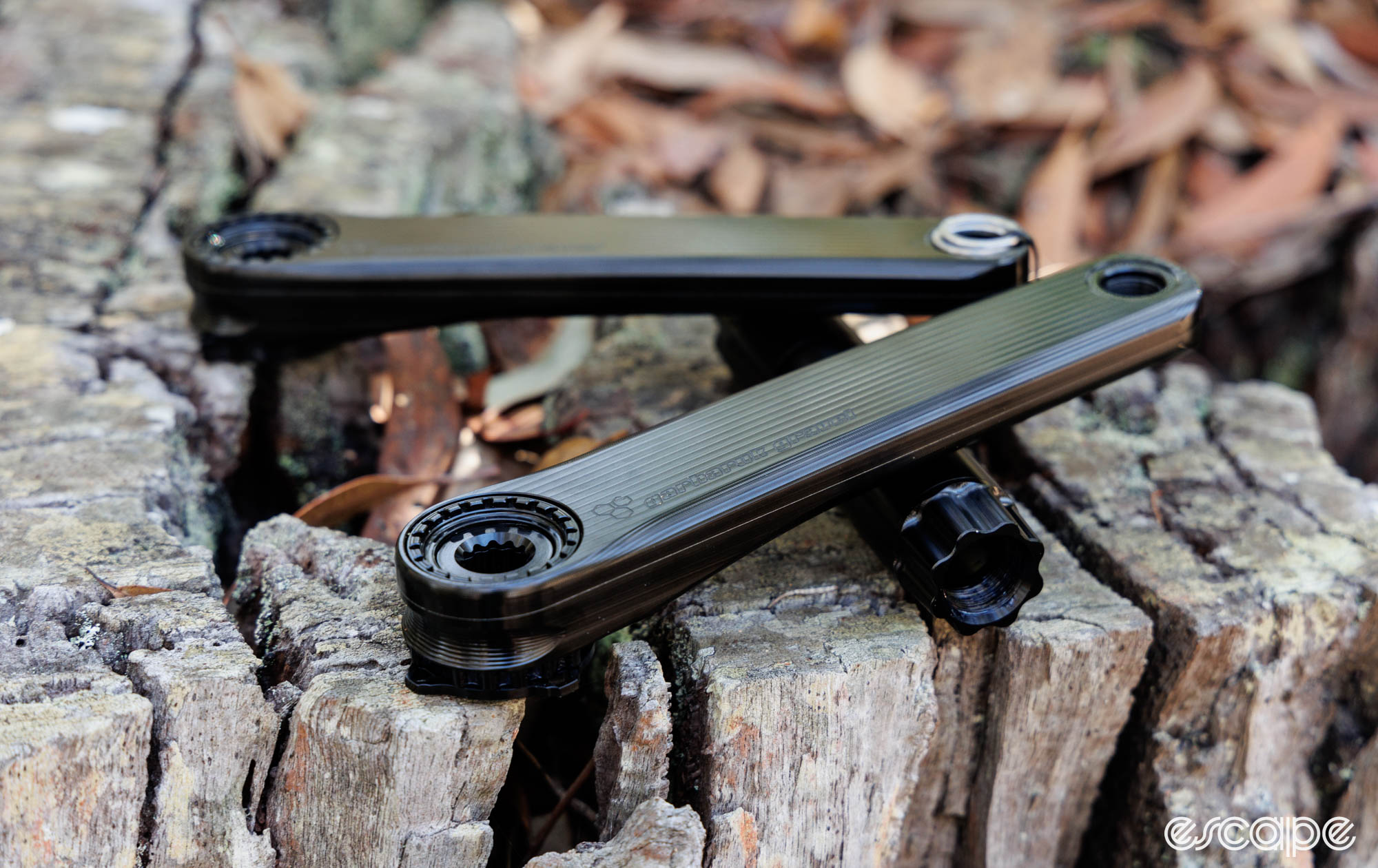
Garbaruk’s cranks have a clamshell design, with each crank arm made up of two CNC-machined 7075 aluminium pieces hollowed out into a boat-like shape and then bonded together. Garbaruk intentionally gives the cranks an obviously machined aesthetic, with tool paths seen throughout. While such a two-piece design is not a cheap way to make a crank, the concept has been well-proven through the widely-regarded Cannondale Hollowgram SiSL cranks (which followed the original Magic Motorcycle cranks in design intent) and, more recently, by FSA.
Garbaruk is hardly hiding that its cranks were inspired by Cannondale’s creation by adopting both Cannondale’s axle spline and direct-mount chainring interfaces. However, while the interfaces may be the same, the execution of the chainring lockring and crank bolts are different enough to limit cross-compatibility.
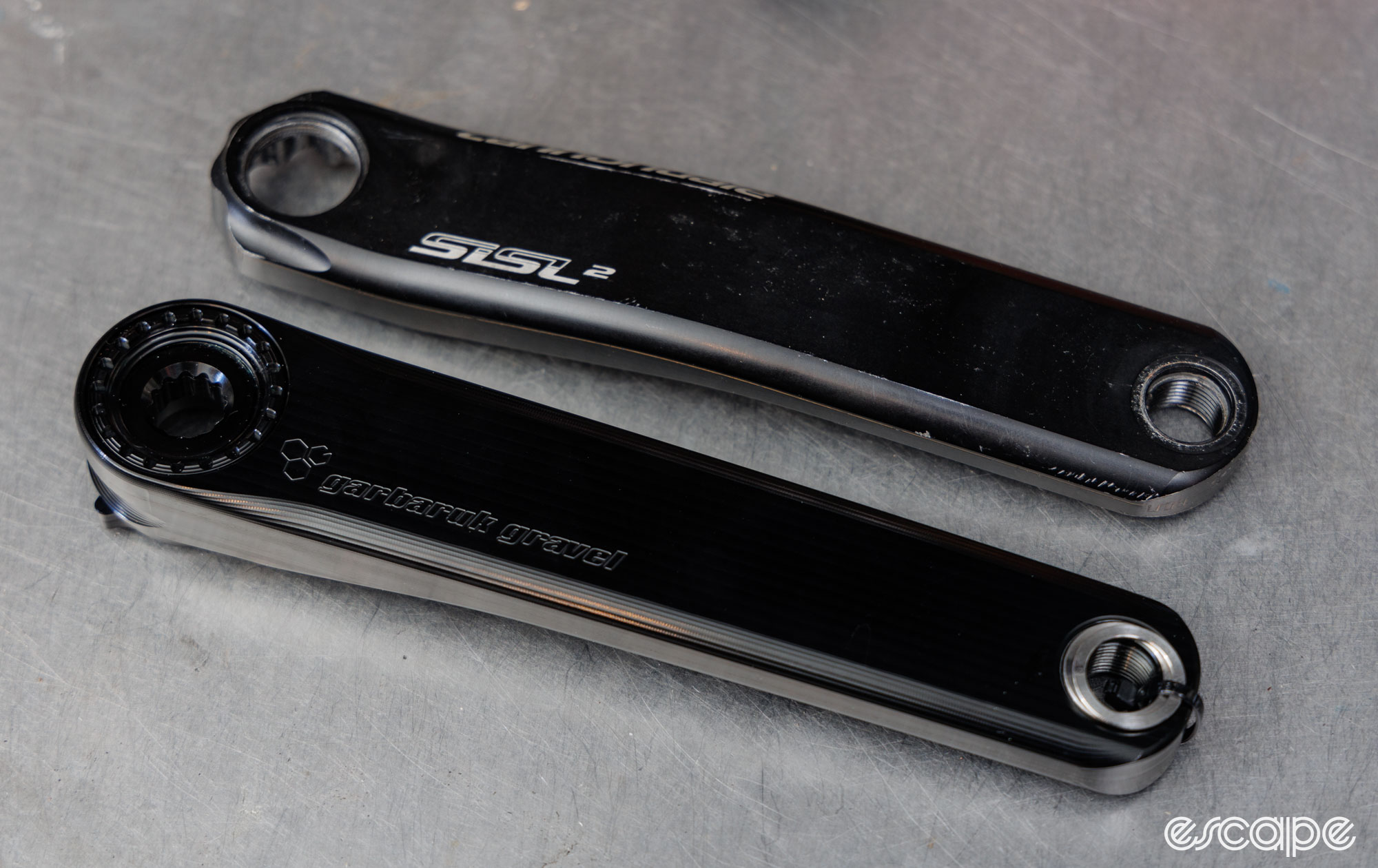
To start, the crankset was marketed as a product designed to fit elegantly with the company’s own 1x chainrings. And while that remains true, Garbaruk has now just added a 2x spider option (US$65) for use with aftermarket 110BCD x 5 bolt chainrings. However, that spider size means a 33T chainring is the smallest option.
Garbaruk themselves produce matching direct-mount 1x narrow-wide chainrings in sizes from 38T to 46T (growing in 2T increments), in both round and oval shapes. Where it’s common for competing brands to offer different tooth profiles for matching with the fussy profiles of Shimano 12-speed or SRAM AXS Flat Top chains, Garbaruk instead has a single-tooth profile that is claimed to work with almost everything under the sun. The company seemingly achieves this by relying on a narrower but taller tooth profile for secure chain retention rather than a profile that achieves such retention through increased tooth width. I’ll return to this.
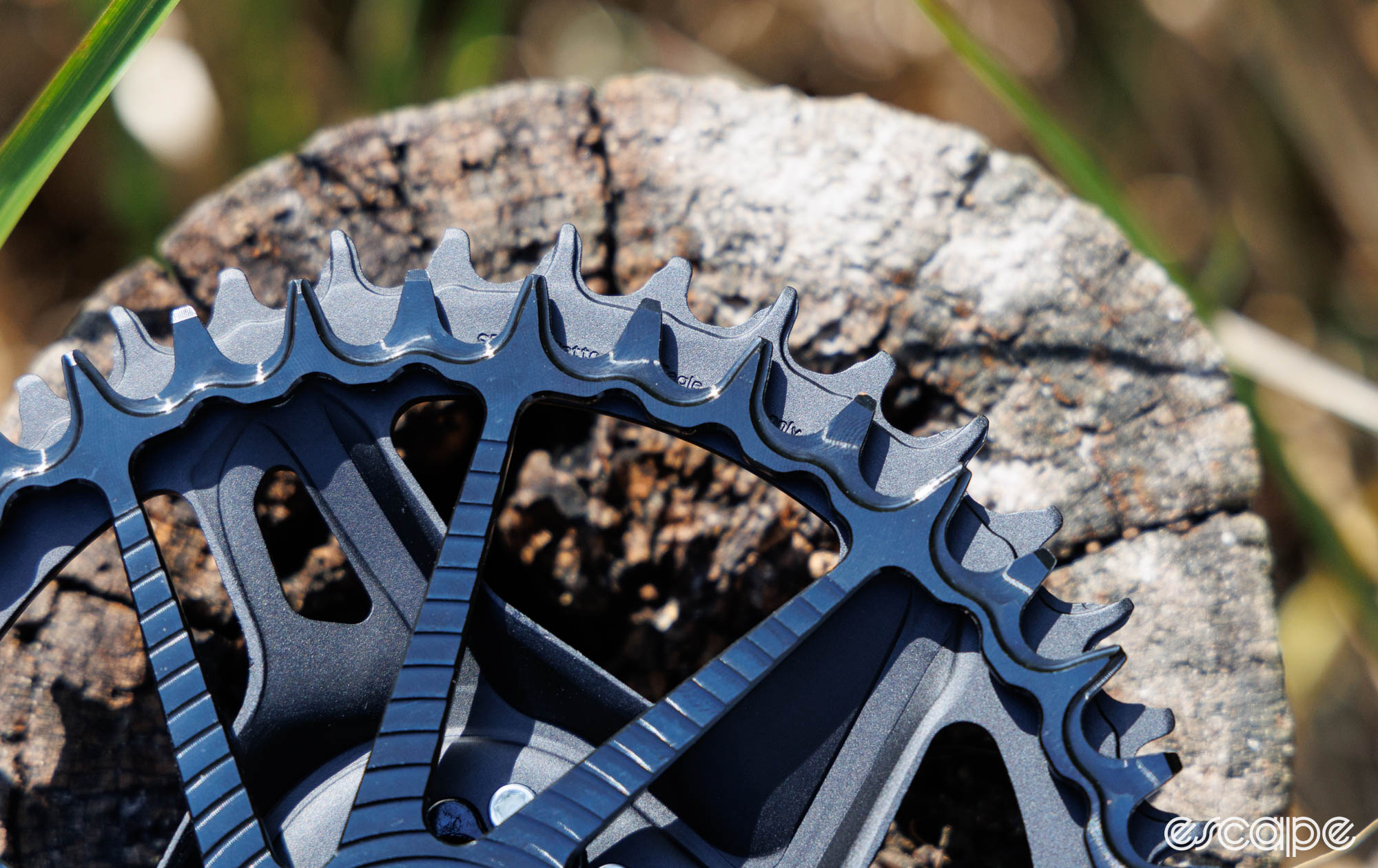
The choices continue with anodised colours. There are eight colour options for the crank arms, the self-extracting crank lockrings, the chainrings, or the 2x spider. You can either match all the colours (or blacks) as I did, or you can go wild with the multitude of possible mixed configurations. Purple crank and silver chainring? Indeed. Black crank and chainring but gold lockrings? Oh yes. Orange, green, and gold in one crank? Yes, but also eww.
Currently, the cranks are only available in a limited choice of 170 or 175 mm lengths. If there is demand, shorter lengths can be added in the future, but the company said such requests have been limited to date.
And then there’s the price, which isn’t as high as you may assume (a common theme with Garbaruk). The crankset sells for US$420, with a direct-mount chainring (sold separately) adding a further US$85.

Nerdier details
Using a common 30 mm spindle diameter, Garbaruk leaves the bottom bracket choice up to specialists. Much of my crank-spinning time was with a T47 bottom bracket from Wheels Manufacturing, but it truly is a choose-your-own-adventure with an endless array of compatible options.
As you may expect of the hollow design, the cranks are competitively low in weight and one of the lightest among the boutique crowd. As tested, the 170 mm sample crank arms weighed 316 grams for the pair (including bolts and lockings) and the spindle adds a further 94 g. That’s 410 g without a chainring or 484 g with Garbaruk’s impressively light ring (42T). For comparison, an old set of Cannondale SISL2 cranks and spindle (narrower than the Garbaruks) are often considered the benchmark for aluminium cranks and tip my scales at 340 g (70 grams less than Garbaruk). You can see other comparative weights in the table below.
While Cannondale’s cranks were offered in a variety of 1x and 2x configurations with an overwhelming number of axle lengths, Garbaruk keeps things relatively simple with its cranksets. The XC crankset comes with a 136 mm splindle, while the Road/Gravel crankset is equipped with a 130.5 mm spindle that provides a 152 mm Q-Factor (aka stance width).
That’s on the wide side for pure road use, with a spindle width designed to offer a 47.5 mm chain line to fit newer gravel bottom bracket fitments, as shared with SRAM’s Wide and Shimano’s GRX gravel offerings.
| Product | Crank material | Weight | Crank Lengths | Q-Factor | Price | Colour options? |
| 5Dev Titanium, gravel | 2-piece machined titanium | 446 g | 165, 170, 175 | 152 mm | US$1,000 | No |
| ActoFive | Machined aluminum | 570 g | 170 | 161.5 mm | US$430 (approx) | Yes (5 options) |
Appleman 2XR | Machined aluminium | 546 g | 100-175 | 150 mm | US$485 | Yes (11, plus custom) |
| Campagnolo Ekar Carbon | Hollow carbon fibre | 570 g | 165, 170, 172.5, 175 | 145.5 mm | US$360 | No |
| CaneCreek eeWings All-Road | Butted titanium | 395 g | 170, 172.5, 175 | 160 mm | US$1,100 | No (except limited editions) |
| Easton EC90 SL | Hollow carbon fibre | 357 g | 170, 172.5, 175 | 149 mm | US$450 | No |
| FSA K-Force Modular | Hollow carbon fibre | 540 g (approx) | 170, 172.5, 175 | 148 mm | US$695 | No |
| Garbaruk Road/Gravel | 2-piece machined aluminium | 410 g | 170, 175 | 152 mm | US$420 | Yes (8 options) |
| Hope RX | 2-piece machined aluminium | 518 g* | 170, 172.5, 175 | 149 mm | US$437 | Yes (7 options) |
| Ignite Inferno | Machined aluminium | 490 g | 150 – 175, plus custom | 149 mm | US$549 | Yes (custom) |
| Ingrid CRS-R2 | Forged and machined aluminium | 450 g | 166.25, 170, 173.75 | 148 mm | US$495 (approx) | Yes (10 options) |
| Middleburn R02 | Machined aluminium | 568 g | 155, 165, 170, 172.5, 175 | 153 mm | US$250 (approx) | Yes (2 options) |
| Praxis Zayante GR | Hollow carbon fibre | 395 g (approx) | 165, 170, 172.5 | 150 mm | US$350 | No |
| Raketa Road/Gravel | Machined aluminum | 480 g | 145, 155, 160, 165, 170, 172.5, 175 | 145 /150 mm | US$450 | Yes (10 options) |
| Rotor Aldhu Carbon | Hollow carbon fibre | 356 g | 155, 165, 170, 172.5, 175 | 147 mm | US$579 | No |
| Shimano RX810 | Forged aluminium | 566 g | 170, 172.5, 175 | 151 mm | US$235 | No |
| SRAM Red 1 | Hollow carbon fibre | 340 g | 165,167.5, 170, 172.5, 175 | 145 / 150 mm | US$690 | No |
| White Industries R30 | Machined aluminum | 560 g | 165, 170, 172.5, 175, 180 | 158.5 mm | US$382 | Yes (2 options) |
All cranksets above support 1x chainrings. Many also allow for 2x compatibility or have alternative 2x options available. The most premium offering has been picked where multiple options exist within a single brand. Claimed weights and pricing are based on crank arms and spindle, no chainring. (*Weight with spider.)
Installation
Installing the crankset uses commonly available tools and known methods but with a few unexpected quirks. In order to save weight and offer a nice hollow spindle aesthetic, Garbaruk made the somewhat odd decision to use a 12 mm hex key size for the main crank bolts. That’s a size choice that allows Garbaruk to make its bolt of aluminium and still feel rock solid at the 50 Nm recommended tightening torque.
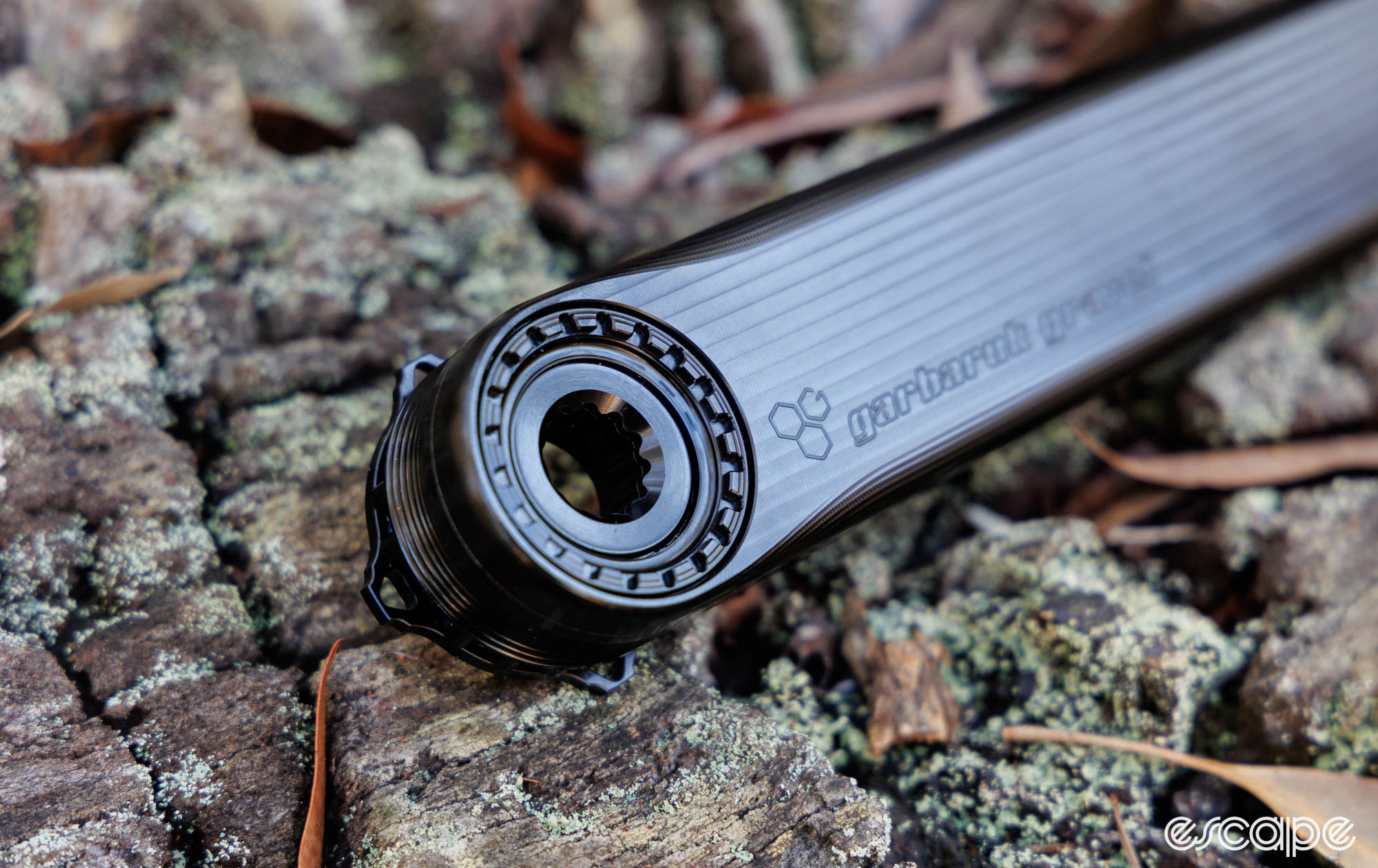
The 12 mm hex key is a size every bike shop should already own, as it’s a size found in many cup-and-cone rear hubs. However, there aren’t many other places on a bicycle you’d ever find one, and that aligns with why just about every mainstream hex key wrench set typically spans sizes from 1.5-10 mm. This isn’t something you’ll have on your multi-tool, and as a result, it’s not a bolt size you’ll be turning out on the trail.
While I’m not looking to make excuses for Garbaruk, it is worth noting that CaneCreek’s eewings cranks use an even-stranger 14 mm hex bolt and in doing so have created a market for specialist tool adapters. And while I’d prefer a bolt that uses a more common tool size, there is hope of a creative tool solution for Garbaruk cranks. It would be great to see Garbaruk include such an adapter with its cranks. Either way, it’s extremely rare for a correctly installed crank to loosen.
Then we come to the lockring for the direct mount chainring. Often such lockrings are a pain point for mechanics with many requiring specialist tools and typically lacking in depth for easy application of torque. Points to Garbaruk for designing its lockring to fit the most common external bottom bracket socket (16 point, 44 mm diameter). However, I’ll quickly remove those points because the minimalist aluminium lockring offers just four points of contact and requires 35 Nm of torque.
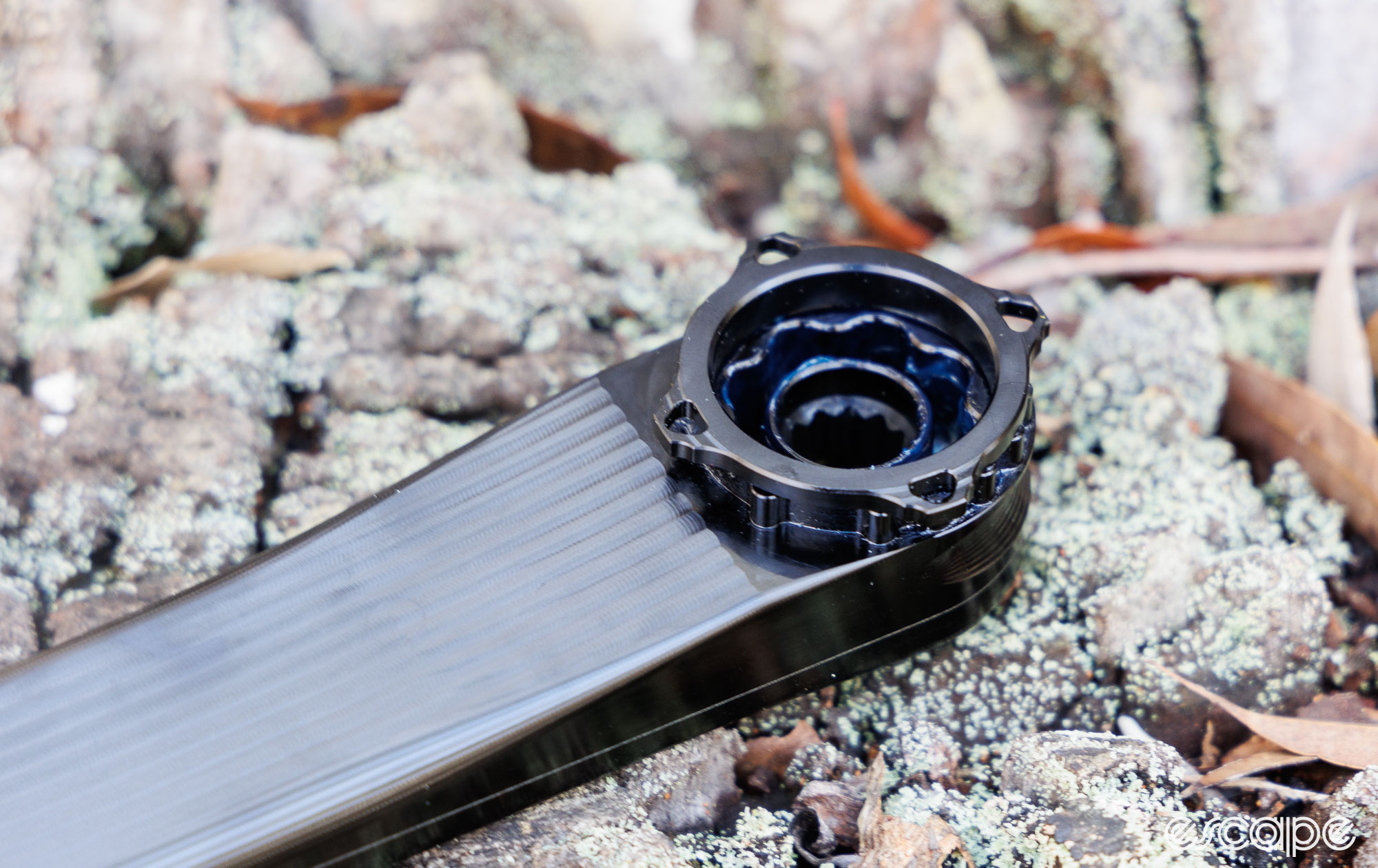
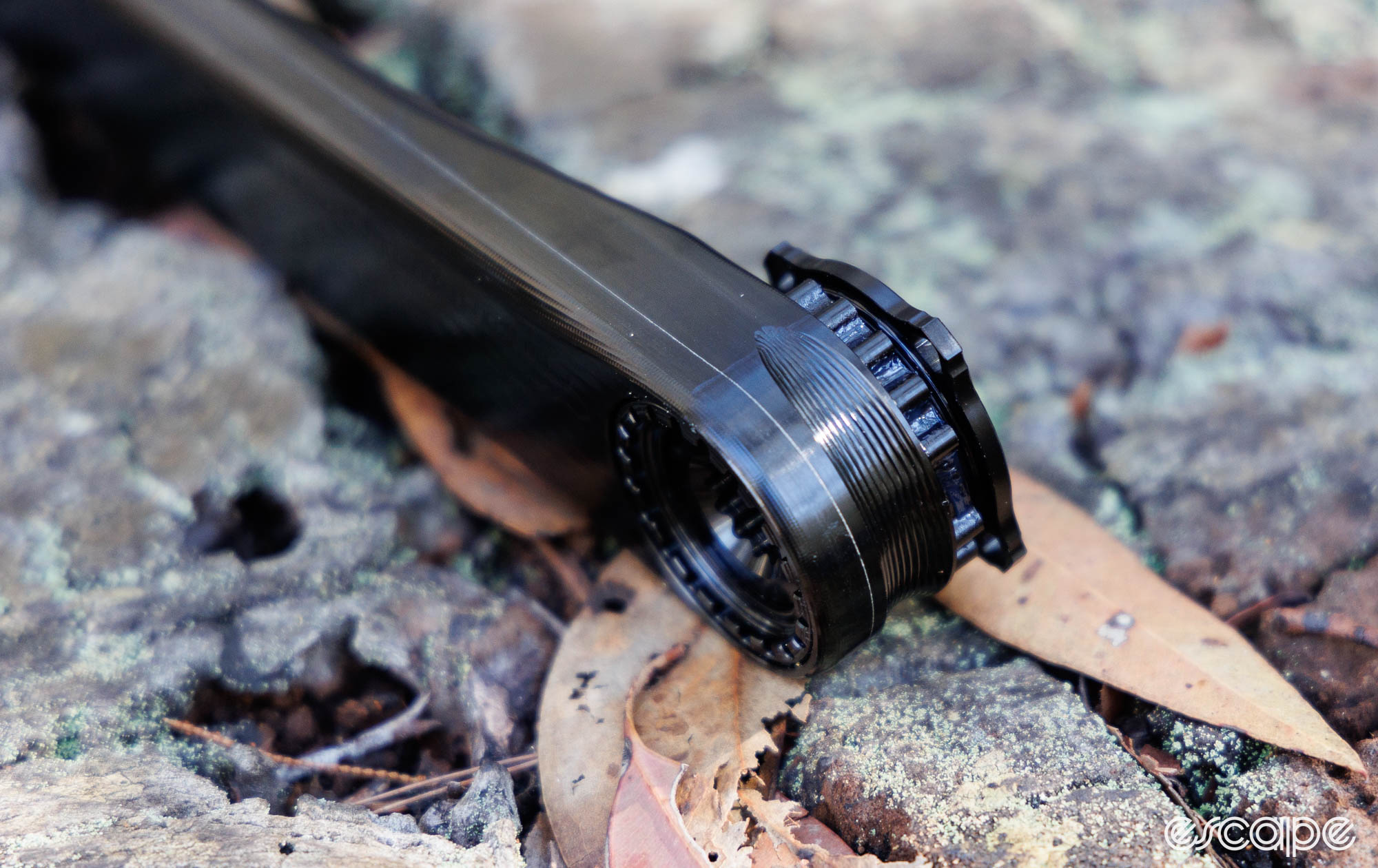
Such minimal engagement makes achieving the recommended torque quite difficult with a high risk of slipping, and the outcome is that most will under-torque this lockring to what feels more suitable. In asking other users for their experiences with this crank, the most common complaint I received was related to the lockring.
Related, my test sample came from an earlier batch of cranks, and the minimalist lockring cracked upon its third removal/installation. There isn’t much room in the design for Garbaruk to wholly overhaul the lockring, but the company has added a smidge of material to increase the strength (a smidge equals a lockring that is now 4.5 g instead of 4.3 g). It remains an intricate piece that I’d feel more comfortable with if it were made from steel.

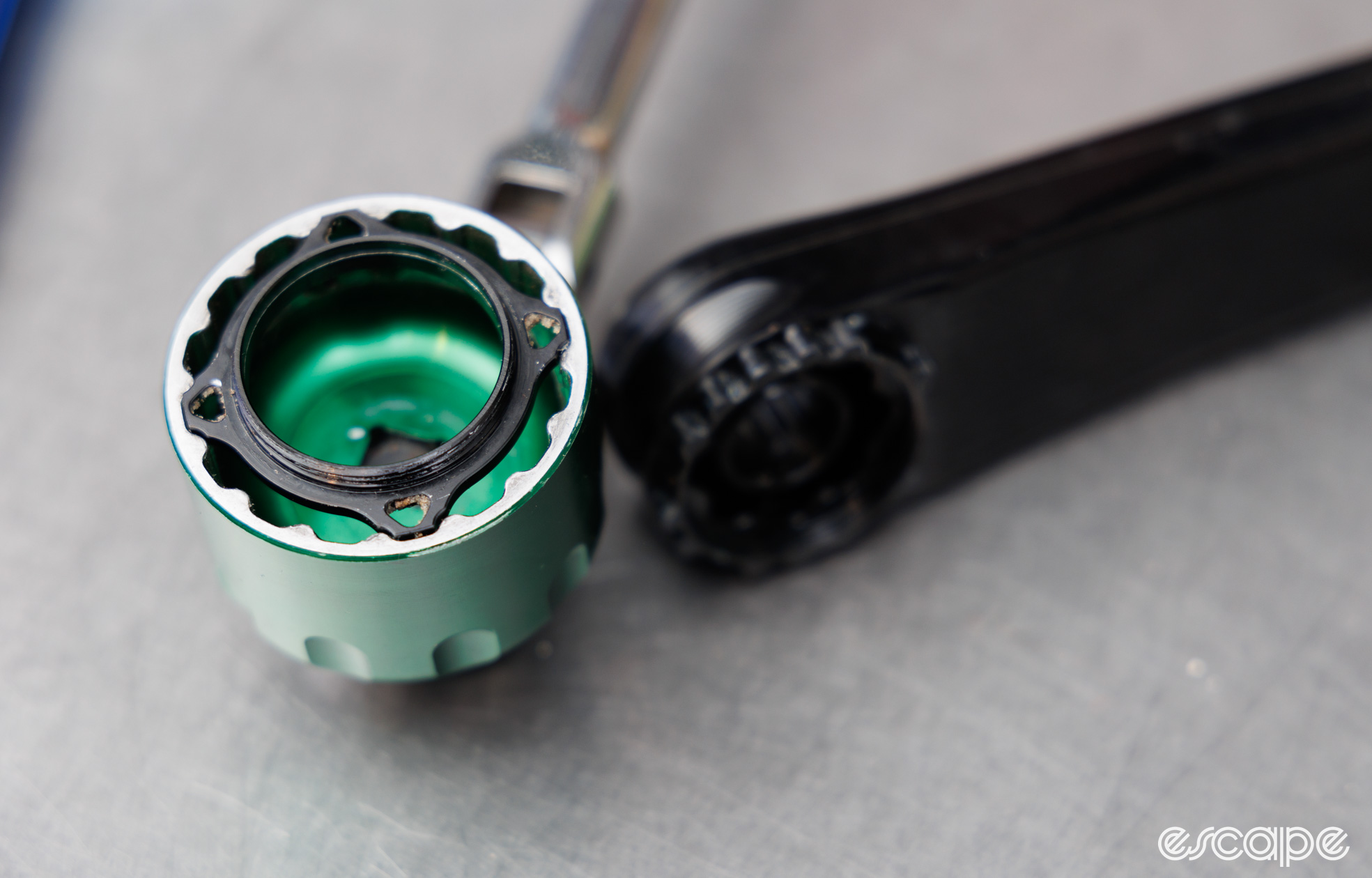
Similar to many cranks on the market today, fine-tuning bearing preload is done with the threaded collar on the left side. Meanwhile, removing the crankset is a matter of undoing one of the 12 mm hex bolts. And in the off-chance you want to remove the self-extracting lockrings (say, to change their colour), then that merely needs an old Shimano-style bottom bracket socket to do so.
Beyond the two pain points above, installing the crankset proved relatively easy once I’d dialled in the number of spacers required on the spindle (aluminium spacers are provided). All the parts fit together smoothly and signal a high standard of manufacturing quality.
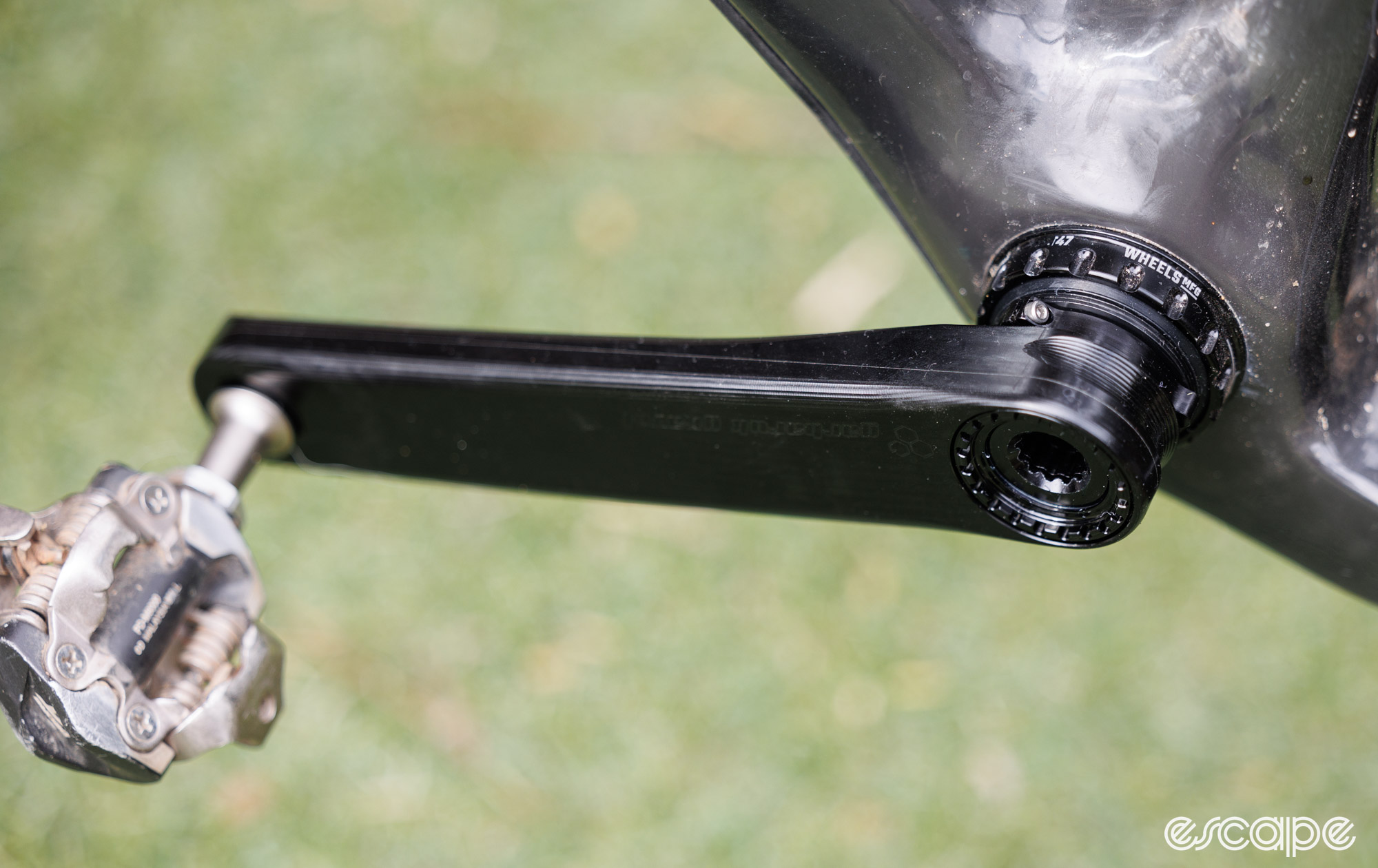
Brief ride notes
There are nuanced differences in how various cranks may feel under foot, but fundamentally what matters most is whether the crank stays quiet, stays where it should (doesn’t loosen or fall off), and largely goes unnoticed.
In this sense the Garbaruk Road/Gravel crank passed with flying colours. There’s enough stiffness to keep things tracking in the direction they should. It remained creak-free. And it didn’t present any nuisances in maintenance or cleaning.
Garbaruk’s claim for wide-open chain compatibility appears to be true. I also didn’t experience a single dropped chain, and have heard from others confirming that the taller tool profile works well. That all said, the taller tooth profile does protrude past the chain, and so it may be more susceptible to impact damage if you have a habit of ramming the ring into immovable objects.
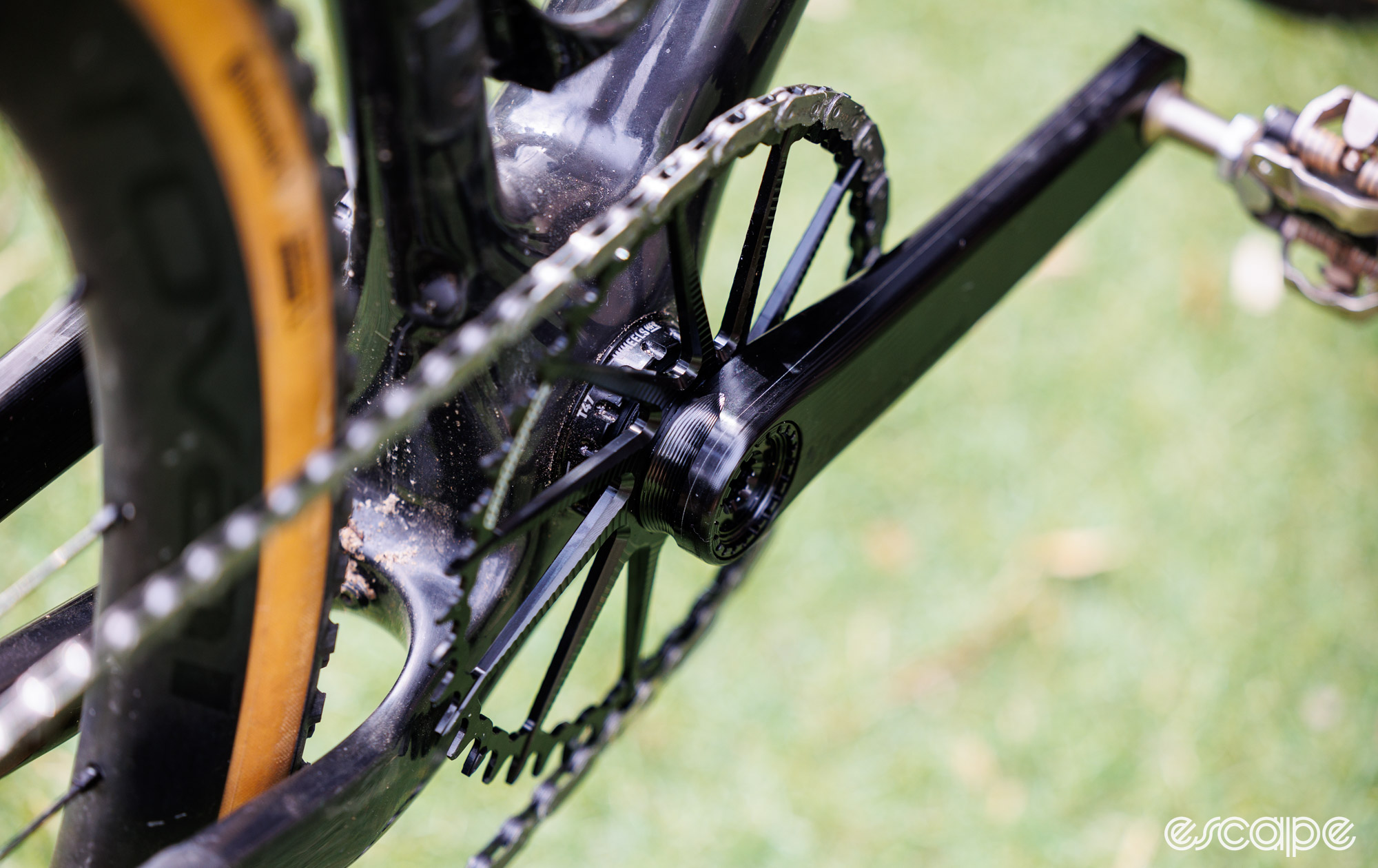
Similarly, I did receive two reports from other users related to Garbaruk’s chainrings causing increased noise when in more extreme cross-chained gears and with SRAM’s Flat Top 12-speed chains. In both instances the noise wasn’t enough for these users to look for alternatives. Noise aside, the durability of these rings seems to be on par with most other lightweight aluminium narrow-wide offerings.
The remaining unknown is merely related to long-term durability, the sort that only years of environmental weathering can reveal. To date my near year-old sample has held up wonderfully, and I haven’t heard any reports related to delamination or a similar worrying failure.

Let’s be honest, it’s about the looks
This grossly oversimplifies it and ignores plenty of design and manufacturing nuance, but fundamentally, the number one reason to pick a crankset like the Garbaruk is because you like the look of it.
If you couldn’t care less about what your crankset looks like or how it ties into the design of your bike, then great, many of the biggest brands have something for you, and chances are, what’s on your bike is already working just fine.
However, if you do care about these things, and you likely do if you’ve read this far, then you’ll probably be happy that companies such as ActoFive, 5Dev, CaneCreek, Ingrid, and Garbaruk exist. Each brings subtly different technical benefits and purposes to the table. Equally, they each do it with a unique aesthetic flair.
I’m not going to claim that Garbaruk’s crank is technically superior to the dozen other options; in fact, and as covered, there are some compromises. However, I will say that it served its function well, it quickly went unnoticed while in use, and I personally like how it looks on the gravel bike it’s fitted to.
Riding bikes is fun. For some, playing with the technical aspects of bikes is fun, too. While a crank like this clearly requires a huge amount of engineering thought and effort, the choice will almost always be distilled down to aesthetics. In my eyes, the Garbaruk crank is a classy option.
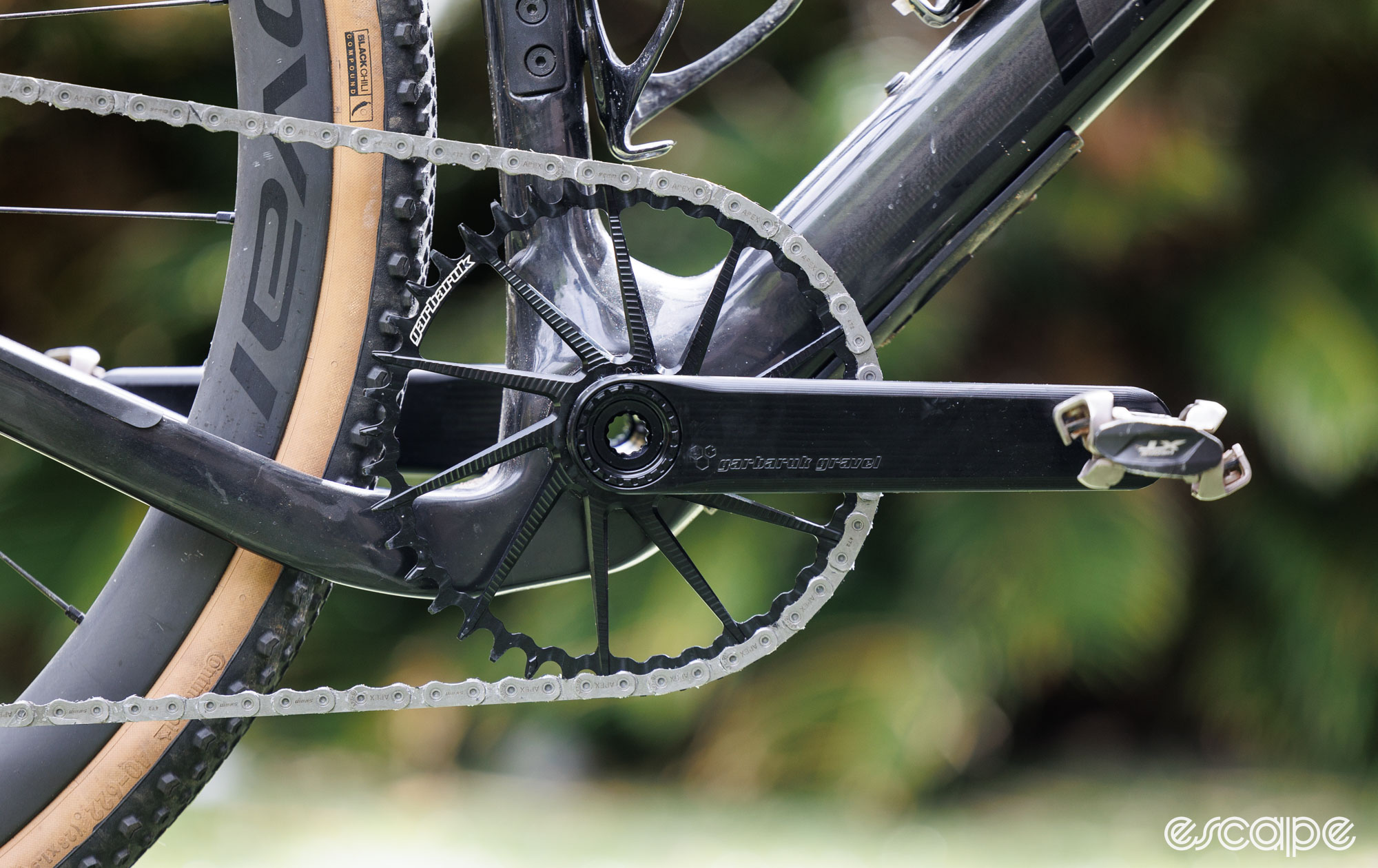
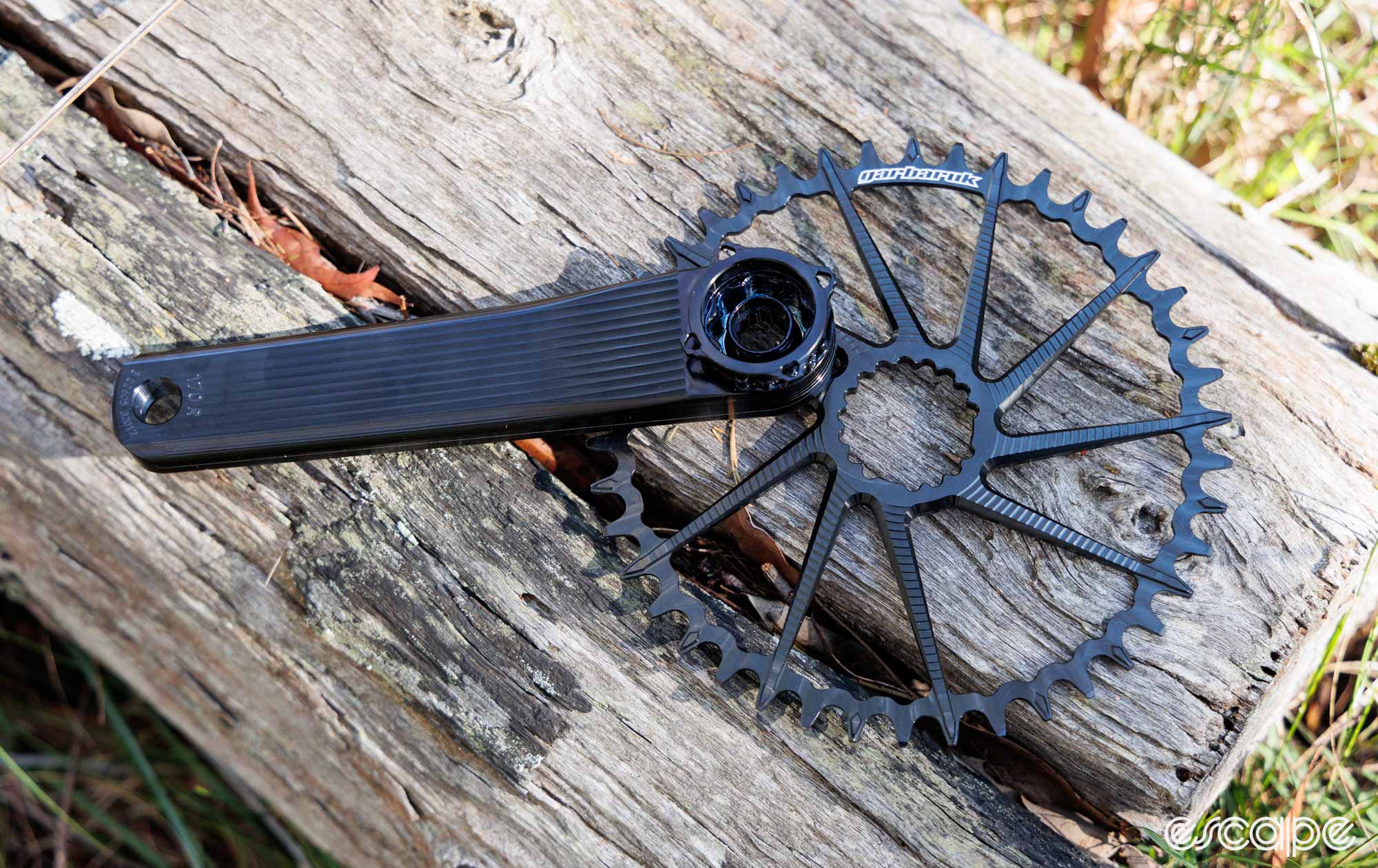

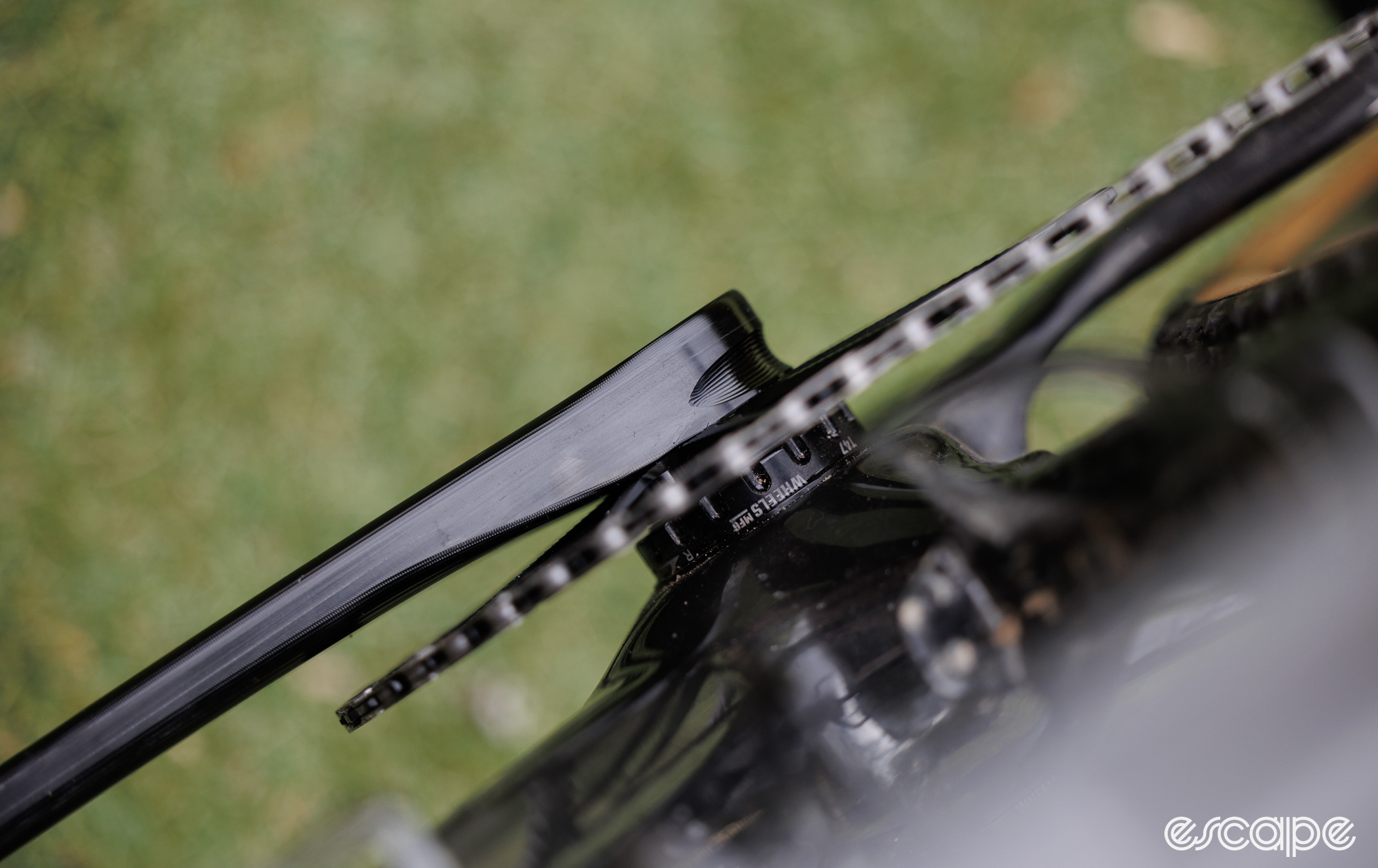


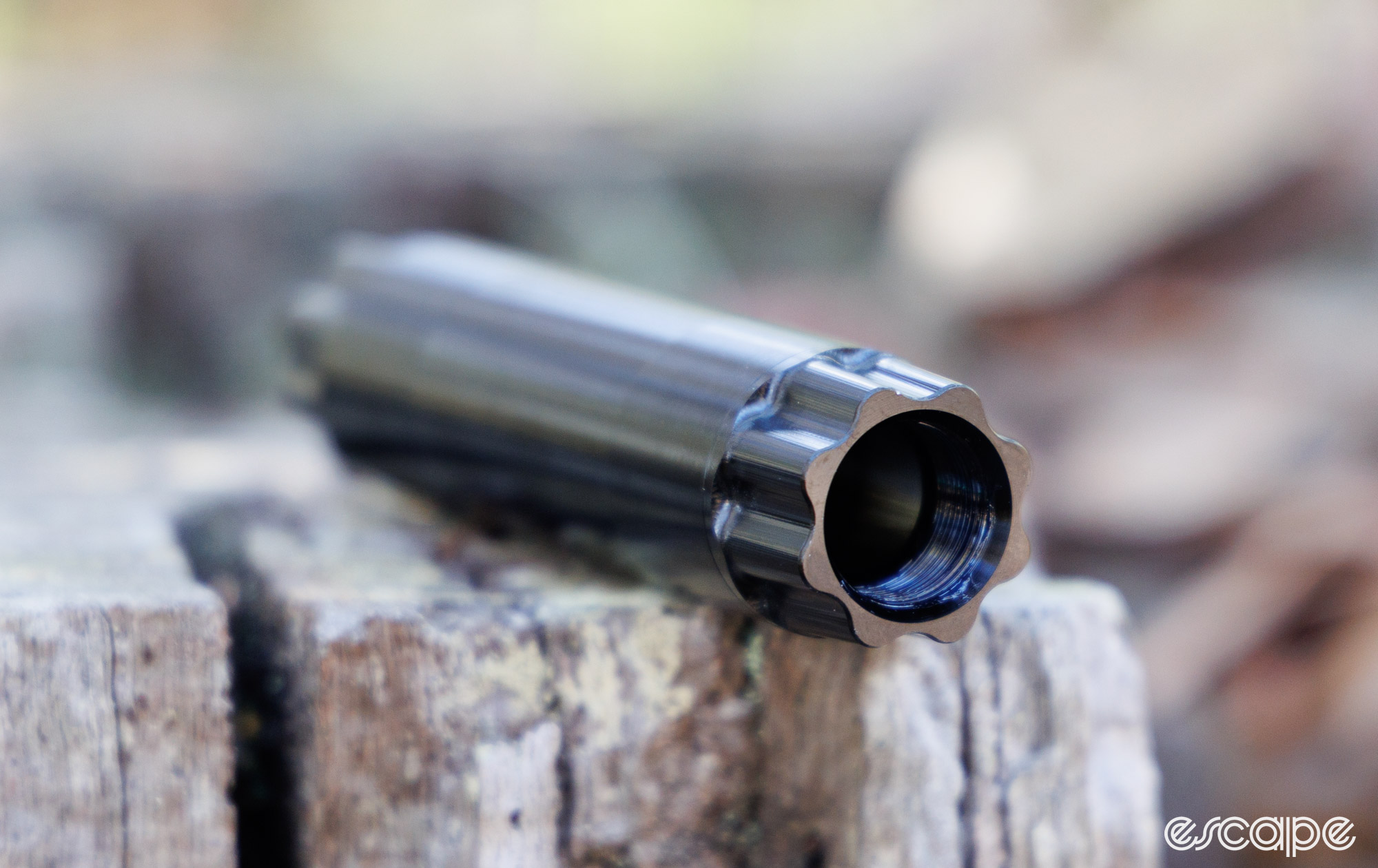
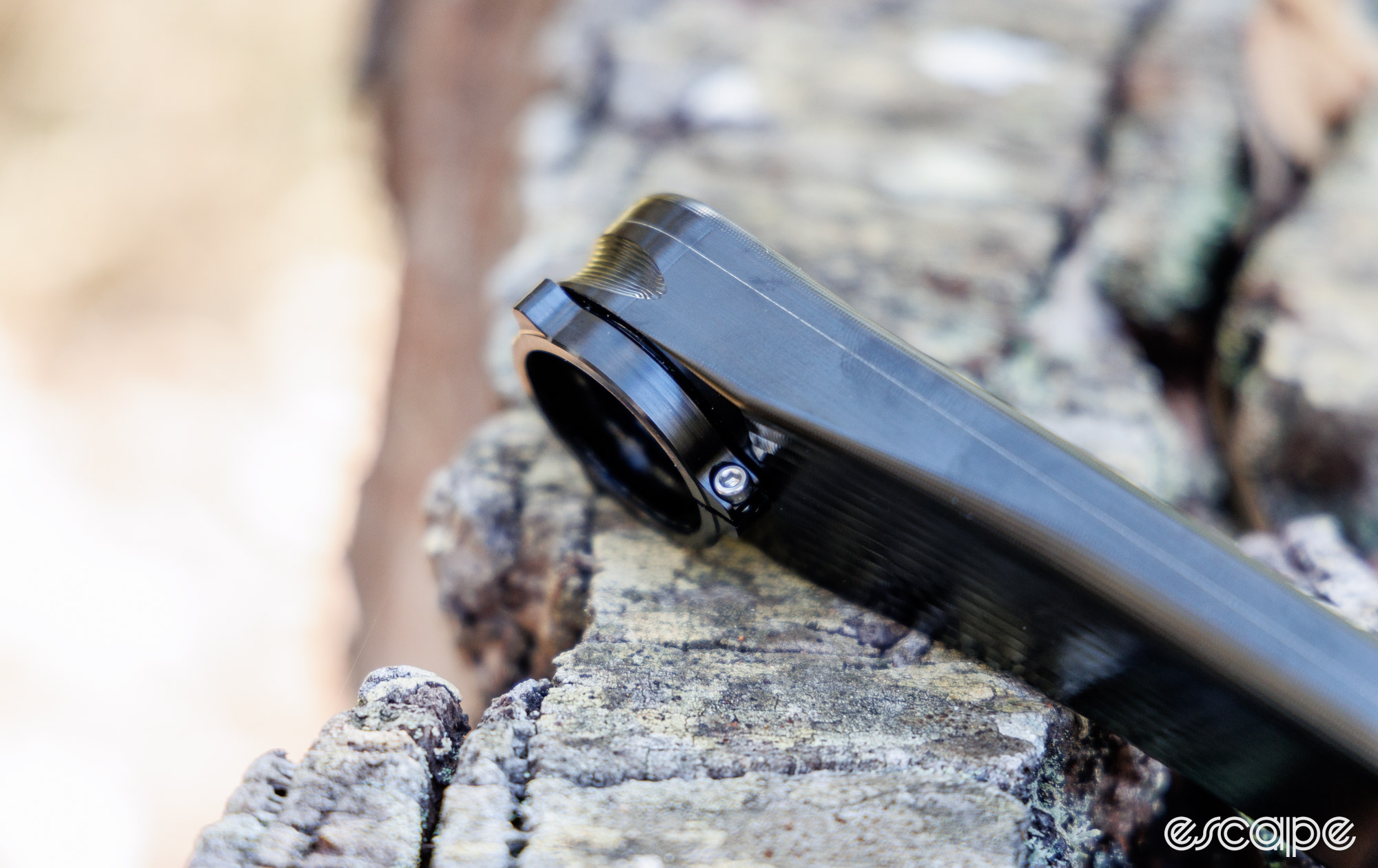
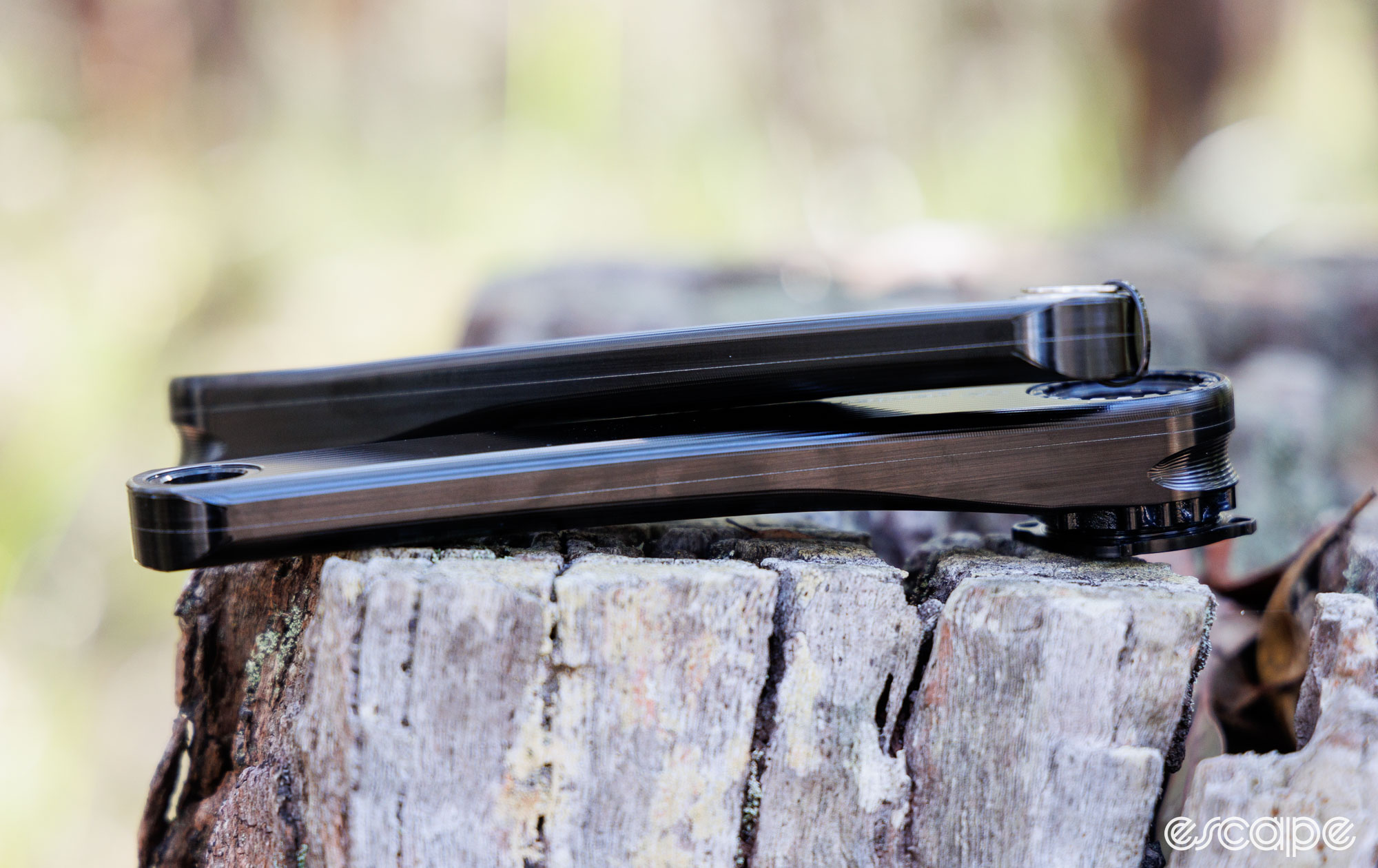
What did you think of this story?
